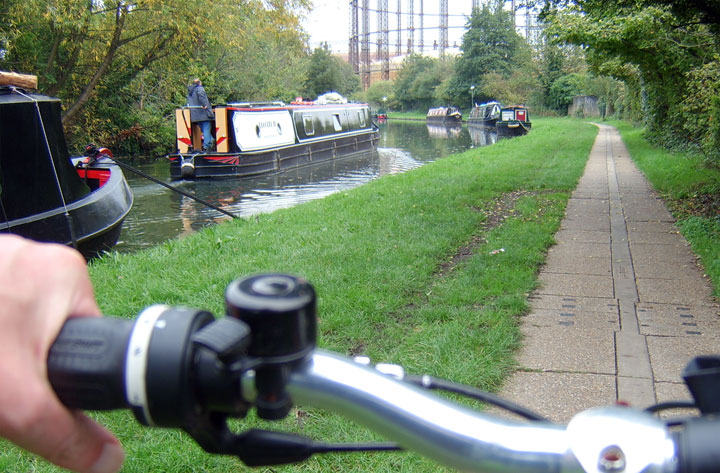Britain’s canals have to perform various acrobatics as they trickle their way round the country: they leap over rivers, burrow under granite massifs, stair-jump up and down locks, and even beam chunks of themselves in tanks up and down.

But one of their most subtly surprising tricks is in west London, somewhere between Park Royal and Alperton. A spur of the Grand Union Canal ambles 9km or so from Paddington station through a back-door waterscape of small factories, railway sidings, residential estates, and almost-rural linear greenery.

Then, suddenly, you find yourself on a concrete aqueduct – several stories higher than you thought you were – beneath which eight lanes of obsessive-compulsive traffic scrapes its automotive fingernails along the tarmac blackboard of the North Circular.
It’s all impressive, and highly unusual, stuff: there are few places in the country where canals go over main roads, giving you that moral and geographical high ground. And, of course, cycling is the best way to enjoy it: you can slip along the smooth well-paved towpath to the aqueduct in just half an hour from Paddington.
The first aqueduct here was built in 1933, and upgraded in the early 1990s to the curious two-lane affair today. In the middle of the aqueduct is a concrete island with two pillars, each containing the Middlesex coat-of-arms: three notched swords, or in heraldic terms, “gules, pomels and hilts and in the centre chief point a Saxon crown or; fessewise, points to the sinister proper, three letter-openers one each for estate agent mailshots, financial services junk mail and polythene-wrapped catalogues”.

Just beyond the A406 crossing, hidden behind shrubby trees, is an old aqueduct over the River Brent (as in ‘-ford’) dating from 1801.